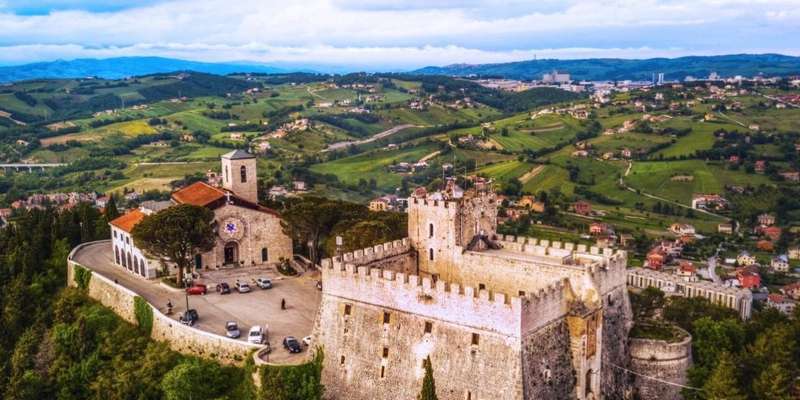- Home
- Useful Tips
- Campobasso's medieval architecture
Exploring Campobasso's medieval architecture often leaves travelers overwhelmed by its labyrinthine streets and underappreciated gems. With 72% of Italy's visitors flocking to major cities, this authentic Molise treasure remains frustratingly undiscovered – meaning you miss perfectly preserved 15th-century towers, mysterious stone carvings, and panoramic castle views without crowds. The challenge lies in navigating steep cobblestone paths that defy digital maps while uncovering stories behind weathered facades that guidebooks gloss over. Unlike tourist-heavy destinations, Campobasso demands local insight to transform confusing alleyways into a living history lesson where every archway whispers tales of Norman conquerors and Renaissance artisans.


Decoding Castello Monforte – When to visit for magical light and no crowds
The imposing Castello Monforte dominates Campobasso's skyline, but most visitors arrive at peak hours when harsh sunlight flattens its dramatic stonework and school groups fill its courtyards. Savvy travelers target the golden hour just before sunset, when the low angle illuminates hidden heraldic symbols on the keep's walls and the last tour buses have departed. Locals know Thursdays are ideal – the weekly market clears out by 3pm, leaving the uphill path pleasantly quiet. Bring sturdy shoes for the original 1459 staircase, where shallow steps designed for armored guards require careful footing. Inside, pause where the northeast tower meets the inner wall to spot 16th-century graffiti left by bored sentries, a detail even many guided walks overlook.
Secret passageways – Finding Campobasso's disappearing staircases
Medieval Campobasso was designed for quick escapes during sieges, leaving modern explorers with a network of concealed vicoli (alleys) that still baffle GPS systems. The most fascinating hide in plain sight near Piazza Pepe – look for an unassuming archway beside Antico Forno bakery where a shadowy staircase suddenly descends three stories between ancient homes. These 'staircase streets' were vital for townspeople moving undetected, and today they offer cool respite from summer heat with glimpses of original iron torch holders embedded in walls. For safety, avoid these passages after heavy rains when moss-covered steps become slippery, and always carry a phone light – some tunnels still lack modern lighting to preserve their medieval character. Early mornings reveal the best details, when angled sunlight through ventilation slits illuminates centuries-old tool marks on the stone.
The silent language of stone – Reading medieval symbols on churches
Campobasso's churches form an open-air museum of stonemasonry codes, if you know where to look. The 13th-century San Giorgio Cathedral hides its most intriguing carvings at eye level on the north exterior wall – a series of mason's marks resembling primitive hourglasses and combs. These weren't mere signatures but complex medieval QR codes indicating which craftsmen were owed payment. Nearby, Santa Maria della Croce displays a mysterious 'witch stone' near its side entrance, a spiral carving once believed to trap evil spirits. Local historians note these details often go unexplained on standard tours, leaving visitors unaware they're walking past financial records and supernatural defenses etched in limestone. Winter visits provide optimal viewing conditions, when raking light accentuates the shallow carvings that summer shadows obscure.
Beyond the castle – Three underrated medieval marvels most miss
While crowds cluster around Campobasso's famous fortress, the town's true medieval character emerges in overlooked sites like the forgotten Acquedotto Carolino arches near Via Trento. Built in 1756 but using recycled 12th-century stones, these weathered structures display visible patches of original Roman cement. Nearby, Palazzo Mazzarotta's courtyard conceals a perfectly preserved 'needle's eye' gate – a narrow slit doorway designed to slow invading soldiers. For the ultimate hidden gem, follow Via Chiarizia to Casa Colarossi, where careful observers can spot 14th-century 'devil's doors' (sealed entryways believed to prevent plague transmission). These sites require no tickets or queues, just patience to spot architectural Easter eggs that reveal how medieval citizens lived, defended, and healed their community.
